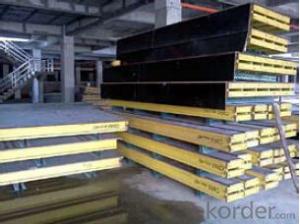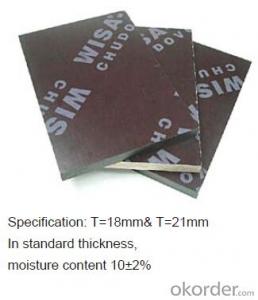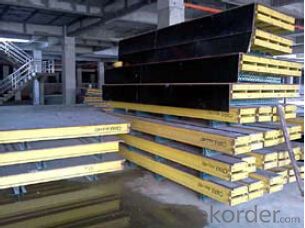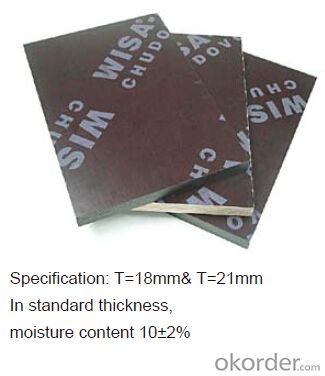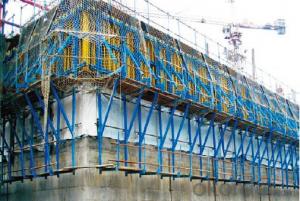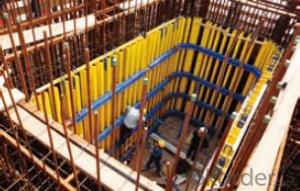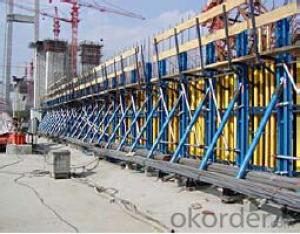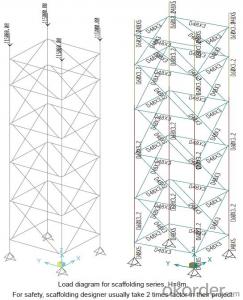Plywood formwork system for Formwork and Scaffolding
- Loading Port:
- Tianjin
- Payment Terms:
- TT OR LC
- Min Order Qty:
- 50 g/m²
- Supply Capability:
- 1000 g/m²/month
OKorder Service Pledge
Quality Product, Order Online Tracking, Timely Delivery
OKorder Financial Service
Credit Rating, Credit Services, Credit Purchasing
You Might Also Like
Plywood --- make perfect concrete surface
WISA-Form Birch is a coated special plywood using in the formwork systems where high
requirements are set on the concrete surface and the times of reuses.
With CNBM timber beam & WISA plywood, the formwork is low weight but high load capacity, it is
widely used in construction.
Characteristics:
◆ Component with high standardization.
◆ Assembling in site, flexible application.
◆ Light weight, easy transportation and storage.
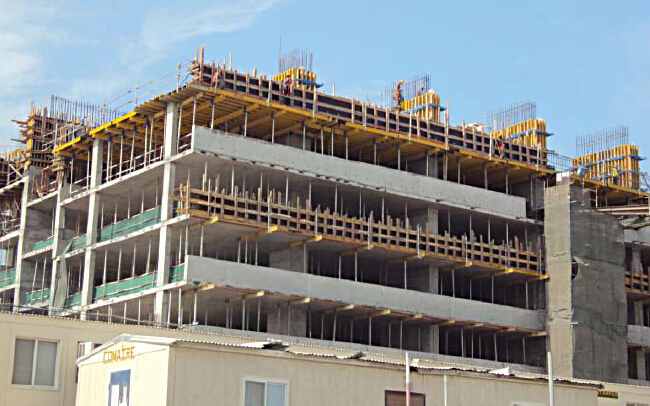
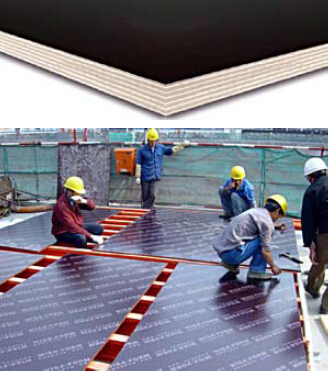
- Q: Can steel formwork be used for both residential and commercial renovations?
- Yes, steel formwork can be used for both residential and commercial renovations. Steel formwork is a versatile and durable option that can withstand the demands of various construction projects, making it suitable for both residential and commercial renovations. Its strength and stability make it ideal for creating concrete structures in both types of buildings.
- Q: How does steel formwork affect the overall sound insulation of the structure?
- Steel formwork does not directly affect the overall sound insulation of the structure since its primary purpose is to provide support during the construction process. However, the use of steel formwork may indirectly impact sound insulation if it affects the placement or installation of soundproofing materials or if it introduces gaps or discontinuities in the structure that can potentially compromise sound insulation.
- Q: Can steel formwork be used for structures with high impact resistance requirements?
- Yes, steel formwork can be used for structures with high impact resistance requirements. Steel is known for its exceptional strength and durability, making it suitable for withstanding high impact forces. Steel formwork provides a robust and rigid framework that can support heavy loads and resist the impact of external forces. Therefore, it is a suitable choice for structures that require high impact resistance.
- Q: What are the different types of supports used in steel formwork installation?
- Steel formwork installation commonly utilizes various types of supports to ensure stability and structural integrity. These supports are crucial for the formwork system, offering the following options: 1. Adjustable Props: These props effectively bear the weight of the formwork system and can be easily adjusted to the desired height. They provide stability during concrete pouring and curing. 2. Scaffolding: Frequently employed in steel formwork installation, scaffolding serves as a stable platform for workers. It allows easy assembly and disassembly, making it highly adaptable to different construction projects. 3. Beams and Girders: These horizontal supports distribute load evenly, preventing excessive deflection or deformation of the steel formwork. 4. Bracing: To maintain stability during concrete pouring and curing, diagonal supports known as bracing prevent lateral movement and secure the formwork in place. 5. Anchors and Tie Rods: Anchors and tie rods secure the formwork system to the existing structure, providing additional support and preventing movement or displacement during concrete pouring. 6. Wall Ties: Wall ties hold the formwork panels together, offering lateral support. Typically made of steel, they withstand concrete pressure during pouring and curing. 7. Wedges and Clamps: Wedges and clamps ensure a secure fit of the formwork panels, preventing concrete leakage during pouring. The appropriate selection of support for steel formwork installation depends on factors like structure size, complexity, load-bearing capacity, and site conditions. It is crucial to carefully consider these factors to ensure a safe and efficient formwork installation process.
- Q: What are the common safety guidelines when working with steel formwork in hazardous areas?
- When working with steel formwork in hazardous areas, it is important to adhere to certain safety guidelines to ensure the protection of workers and prevent accidents. Here are some common safety guidelines to follow: 1. Personal Protective Equipment (PPE): All workers should wear appropriate PPE such as safety goggles, gloves, steel-toed boots, and hard hats to protect themselves from potential hazards. 2. Training and Education: Workers should receive proper training on how to work with steel formwork and be educated about the potential hazards associated with the specific hazardous areas they will be working in. This includes knowing how to handle steel formwork safely and understanding emergency procedures. 3. Hazard Identification and Risk Assessment: Before starting any work, a thorough assessment of the hazardous area should be conducted to identify potential risks and hazards. This will help in implementing appropriate safety measures and controls. 4. Fall Protection: If working at heights, proper fall protection measures should be in place, such as guardrails, safety harnesses, and safety nets. Workers should be trained on the correct use of fall protection equipment and systems. 5. Fire Safety: In hazardous areas, there may be an increased risk of fire. Ensure that fire extinguishers are readily available, workers are trained in their use, and emergency evacuation plans are in place. 6. Electrical Safety: Any electrical equipment or tools used in the vicinity of the steel formwork should be properly grounded and regularly inspected for safety. Workers should be cautious and avoid contact with live wires. 7. Proper Handling and Storage: When working with steel formwork, it is crucial to handle and store the materials properly to prevent injuries. This includes using appropriate lifting equipment, securing the formwork properly, and storing it in designated areas to avoid tripping hazards. 8. Adequate Ventilation: If working in confined spaces, ensure proper ventilation is in place to prevent the buildup of toxic gases or fumes. Workers should be trained on the signs and symptoms of exposure to hazardous substances. 9. Regular Inspections and Maintenance: Regular inspections of the steel formwork and surrounding areas should be conducted to identify any potential safety hazards. Any necessary repairs or maintenance should be carried out promptly. 10. Communication and Emergency Procedures: Clear communication should be established between workers, supervisors, and other stakeholders to ensure everyone is aware of the potential hazards and emergency procedures. Regular safety meetings and drills can help reinforce this communication. By following these common safety guidelines, workers can minimize the risks associated with working with steel formwork in hazardous areas and create a safer working environment.
- Q: How much weight can steel formwork support?
- The weight that steel formwork can support depends on various factors such as the size and thickness of the steel, the design of the formwork, and the supporting structure. Generally, steel formwork is capable of supporting heavy loads ranging from a few hundred kilograms to several tonnes.
- Q: How is steel formwork assembled?
- Steel formwork, also known as steel shuttering, is a popular choice for construction projects due to its durability and reusability. The assembly process of steel formwork involves a series of steps to ensure a secure and stable structure. Firstly, the steel formwork panels are laid out on the construction site in the desired configuration. These panels are typically made of high-quality steel and come in various sizes and shapes to accommodate different project requirements. Next, the panels are interconnected using different types of fastening systems, such as clamps, bolts, or pins. This ensures that the formwork remains rigid and stable during concrete pouring and curing. The fastening system used may vary depending on the specific design and requirements of the project. Once the panels are securely connected, adjustable props or braces are installed to provide additional support and stability to the formwork. These props are usually made of steel and can be adjusted in height to accommodate different concrete pouring heights. After the formwork structure is assembled and properly supported, it is ready for concrete pouring. The formwork acts as a mold, containing the fresh concrete until it hardens and gains sufficient strength. The concrete is poured into the formwork using pumps or buckets, and then it is vibrated or compacted to eliminate air pockets and ensure proper adhesion. Once the concrete has cured and gained sufficient strength, the formwork is carefully dismantled. The dismantling process involves removing the props, unfastening the panels, and carefully disassembling the formwork structure. The dismantled steel formwork can then be cleaned, inspected, and reused for future construction projects, making it a cost-effective and sustainable choice. Overall, the assembly of steel formwork involves laying out and connecting the steel panels, installing adjustable props for support, pouring concrete, and finally dismantling the formwork structure. This process ensures a robust and stable formwork system that facilitates efficient and high-quality concrete construction.
- Q: Can steel formwork be used in industrial construction projects?
- Certainly, steel formwork is a viable option for industrial construction projects. Renowned for its robustness, durability, and ability to bear heavy loads, steel formwork proves suitable for demanding applications such as industrial construction. It can effectively withstand the immense pressure exerted by substantial concrete pours and can be used repeatedly, making it a cost-effective choice for extensive undertakings. Moreover, steel formwork guarantees a smooth and consistent finish to the concrete structure, ensuring exceptional quality outcomes. Furthermore, it offers adaptability in design, allowing for customization to cater to the specific needs of industrial construction ventures. In summary, steel formwork presents itself as a dependable and efficient solution for industrial construction projects.
- Q: What are the considerations when designing steel formwork for industrial facilities?
- When designing steel formwork for industrial facilities, several considerations need to be taken into account. Firstly, the load capacity of the formwork must be carefully calculated to ensure it can support the weight of the concrete during pouring and curing. Additionally, the formwork design should allow for ease of installation, dismantling, and reusability to optimize efficiency and cost-effectiveness. The dimensions and shape of the formwork should be tailored to the specific requirements of the industrial facility, considering factors such as floor heights, wall thicknesses, and column sizes. Moreover, the formwork design should incorporate safety measures to protect workers and prevent accidents. Finally, the choice of materials and surface finish should be suitable for the intended applications and environmental conditions, ensuring durability and longevity of the formwork system.
- Q: How does steel formwork handle different concrete workability levels?
- Steel formwork is a versatile solution that can easily handle different concrete workability levels. Its rigid and durable structure ensures that it can withstand the pressure and weight of concrete, regardless of its consistency. Steel formwork provides a stable and secure framework, allowing for the pouring and shaping of concrete into various shapes and designs, even if the workability level varies.
Send your message to us
Plywood formwork system for Formwork and Scaffolding
- Loading Port:
- Tianjin
- Payment Terms:
- TT OR LC
- Min Order Qty:
- 50 g/m²
- Supply Capability:
- 1000 g/m²/month
OKorder Service Pledge
Quality Product, Order Online Tracking, Timely Delivery
OKorder Financial Service
Credit Rating, Credit Services, Credit Purchasing
Similar products
Hot products
Hot Searches
Related keywords
